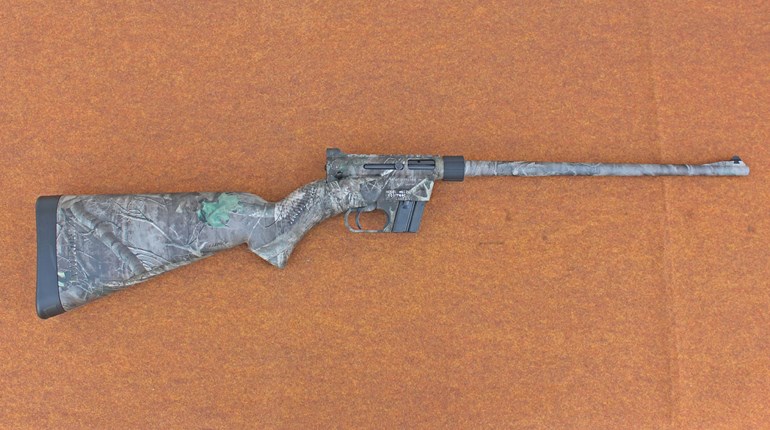
The standing position is in many ways the most important shooting position. It is the most natural and most challenging position to learn. Standing position scores are normally lower than scores shot in other positions so it requires more practice to score high. Thus, standing scores are more important to the overall shooting score than any other position.
Below are five tips that will help with standing position in all rifle positions (especially the air gun and smallbore disciplines).
Tip One: Study the Position
The most important features of a good standing position are shown in this picture. (Note these tips are for a right-handed competitor.)

- Feet slightly wider than shoulder width.
- Left foot is pointing straight ahead (parallel to firing line). The left leg is almost vertical.
- Left arm is almost vertical to support rifle's weight without muscular tension in the arm and shoulder.
- Right foot is pointed out slightly to relive tension in the right thight.
- Feet, knees and hips are in line with the target.
- Hips and below are oriented in a vertical plane.
- Right arm is held up slightly more to provide better contact between the right shoulder and the buttplate (air rifle).
- Left arm is vertical to support rifle weight.
- Left arm and left leg are almost vertical.
- Shoulders are nearly level with no hunching of the right shoulder.
Tip Two: Practice the Body Position
Begin to build your standing position by first getting into the position without the rifle. The numbered points are the correct order to build one effectively. One of the secrets to good standing position shooting is getting the proper back bend and twist.
- Turn feet approx. 90 degrees away from aiming area. Spread feet shoulder width apart.
- Keep both knees straight.
- Spread weight evenly over both feet.
- Bend your back sideways and to the rear, away from the aiming area.
- Twist your back by turning shoulders towards the aiming area.
- Bend left arm and rest elbow on side.
- Bend left arm and hold elbow out from body.
Tip Three: Practice the Rifle Position
Now get into the standing position with the rifle. Aim at a blank space, don't try to use a target yet.
- Let rifle rest on left hand. Use either split-finger position or clenched fist to support the rifle.
- Rest left arm on side. Let bones of left arm and hand support the rifle. Left arm should be relaxed.
- Grasp pistol grip firmly with right hand. Pull the stock back into the shoulder.
- Place rifle high enough in shoulder to keep head erect or tipped slightly forward. Look through sights.
- Balance weight of body and rifle equally on both feet. Use back bend for balance.
Tip Four: Align the Position
Until now, you have been trying the standing position without aiming at a target. Next, hang up a target and align your position so the rifle points naturally at the target. If you have pointed your feet 90 degrees away from the target and used the proper back bending twist, no horizontal correction will be necessary.
To find out if you need to make a vertical correction to raise or lower the rifle, put the rifle in position and then lower your eyes. Relax and let the rifle settle into a natural position. When you look up, if the rifle is pointing above or below the target you need to correct the position.
Tip Five: Shoot in Position
Firing the shot in standing is the same as firing the shot in the supported position except that you will not be able to hold the rifle as steady. The fundamentals: aiming, breath control and hold control, trigger control and follow-through are still performed in the same way.
When you first try to shoot in this position, the rifle will move a great deal. That is normal for a new shooter. The important thing is to accept these hold movements as normal and to fire the shot without trying to make it perfect.
As you get into position, just center your hold on the target, hold as well as you can and pull the trigger smoothly without disturbing your hold.
Learning to shoot standing is like learning to play a musical instrument. You can't play a beautiful song after your first lesson. That comes only after many lessons and much practice. In the same way, it takes time to teach your mind and body to work together to hold the rifle still and pull the trigger at the right time. The exciting thing about shooting is that with regular practice, you will develop the ability to hold the rifle steady and will shoot better and better.
For more advanced instruction on the standing rifle position, read this article.



































